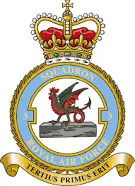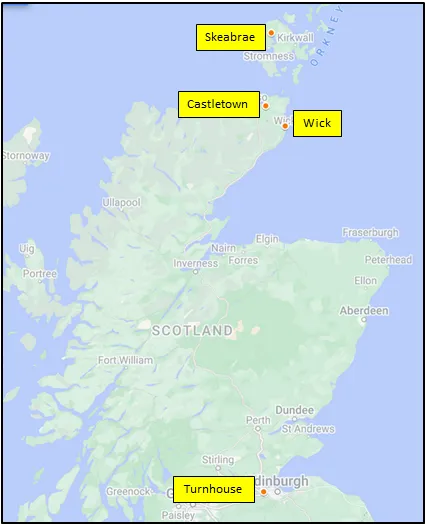Downs, John Milton (Flying Officer)
Prisoner of War 1943-March-09


Birth Date: unkown date
Born:
Parents:
Spouse:
Home: Homewood, Manitoba
Enlistment:
Enlistment Date: unkown date
Service
RCAF
Unit
3 (FB) Sqn- Squadron (RAF)
Tertius Primus Erit The third shall be first
Base
RAF Hunsdon
Rank
Flying Officer
Position
Pilot
Service Numbers
J/11018
PoW: 2525
Home
Crew or Other Personnel
Typhoon EJ989
Typhoon serial: EJ989

Hawker Typhoon Mk. IB (Serial No. RB402), coded 5V-P, of No. 439 Squadron, RCAF, landing at airfield B100, Goch, Germany, ca. 1944
The Hawker Typhoon (Tiffy in RAF slang) is a British single-seat fighter-bomber, produced by Hawker Aircraft. It was intended to be a medium-high altitude interceptor, as a replacement for the Hawker Hurricane but several design problems were encountered and it never completely satisfied this requirement.
The Typhoon was originally designed to mount twelve .303 inch (7.7 mm) Browning machine guns and be powered by the latest 2,000 hp engines. Its service introduction in mid-1941 was plagued with problems and for several months the aircraft faced a doubtful future. When the Luftwaffe brought the formidable Focke-Wulf Fw 190 into service in 1941, the Typhoon was the only RAF fighter capable of catching it at low altitudes; as a result it secured a new role as a low-altitude interceptor.
The Typhoon became established in roles such as night-time intruder and long-range fighter. From late 1942 the Typhoon was equipped with bombs and from late 1943 RP-3 rockets were added to its armoury. With those weapons and its four 20mm Hispano autocannons, the Typhoon became one of the Second World War's most successful ground-attack aircraft.
By 1943, the RAF needed a ground attack fighter more than a "pure" fighter and the Typhoon was suited to the role (and less-suited to the pure fighter role than competing aircraft such as the Spitfire Mk IX). The powerful engine allowed the aircraft to carry a load of up to two 1,000 pounds (450 kg) bombs, equal to the light bombers of only a few years earlier. The bomb-equipped aircraft were nicknamed "Bombphoons" and entered service with No. 181 Squadron, formed in September 1942. Wikipedia
Unit Desciption
3 (FB) Sqn Tertius Primus Erit (x)
History of the Squadron during World War II (Aircraft: Hurricane I, IIb, IIc, Typhoon Ib, Tempest V)

No. 3 Squadron is the oldest squadron in the RAF, Having been formed on 13th May 1912. It served through out World War I. It served in fighter and ground attack roles. Between the wars, it was disbanded and reformed a number of times, flying a number of different types of aircraft. Before the start of the Second World War No 3 Squadron was posted as part of Fighter Command to RAF Station Biggin Hill and equipped with the Hawker Hurricane Mk I. On the outbreak of war, it moved to Croydon, then to Hawkinge and Kenley. It was not in action until May, 1940, when it was briefly deployed to Merville, France as part of 63 Wing in support of the British Expeditionary Force following the German attack on the West. It was forced to withdraw after 10 days, having claimed 60 German aircraft for the loss of 21 of its own. Once back up to strength, No. 3 Squadron was used from May 1940 to April 1941 as air defence for the Royal Naval base at Scapa Flow and convoy protection, operating from Wick, Castletown and Skeabrae, remaining in Scotland until April 1941, when it moved south to RAF Martlesham Heath.
The squadron was involved in night-fighting, where it co-operated with "Turbinlite" searchlight equipped Douglas Havocs (the searchlight in the Havoc was intended to illuminate enemy aircraft so that the Hurricanes could attack them), but with no success. The Hurricane was not well equipped for night fighting. In June 1941 it moved to RAF Stapleford Tawney operating four-cannon Hurricane IIs in 'Rhubarb' attacks on defended ground targets and shipping in northern France and Belgium, flying from Stapleford Tawney and Hunsdon. It participated in the Dieppe raid, among other activities. In February 1943 it re-equipped with the Hawker Typhoon Ib for fighter-bomber and anti-shipping strikes, flying from a number of bases in SE England. It re-equipped in March 1944 with the new Hawker Tempest fighter, operating over the Normandy beach-head and against German V1 flying bombs, claiming 288 V-1s shot down.
It then deployed across the Channel, flying as part of the 2 TAF fighting through the low countries and into Germany. Amongst its pilots was F/L Pierre Clostermann, who flew with 3 Squadron from March 1945 until the end of the war in Europe
Maps for Movements of No. 3 Squadron RAF 1940-45

MAP 1: No 3 Squadron bases, Scotland May 1940-April 1941 (right-click on image to display enlarged view in new tab)
|

MAP 2: No. 3 Squadron bases, SE England April 1941-September 1944
|

MAP 3: No. 3 Squadron bases in Europe September 1944-May 1945
|